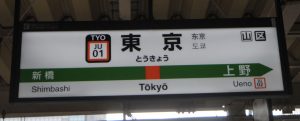Planning your trip

NOTE Since the cost of most of the JR (Japan Rail) passes went up in October 2023 the prices quoted in the 5th edition of Japan by Rail and some of the comments in book and in the text below are no longer correct. Look at Updates and news for the current details.
The various JR companies offer a range of rail passes so it is worth considering which is most suitable for the area you want to travel in and how long you plan to stay in Japan.
The Japan Rail Pass is truly the bargain of the century. It entitles the pass holder to travel freely on almost all JR services, including most shinkansen (bullet trains) without needing to buy a ticket. The only exceptions are the Nozomi (Tokyo to Hakata) and Mizuho (Hakata to Kagoshima). It is most suitable if you are planning to stay in the country for a week or more and if you are planning to use a shinkansen service for at least one reasonably long trip. For more details see Japan Rail Pass.
The regional JR rail passes (JR Hokkaido, JR East, JR West, JR Kyushu, JR Shikoku) can either be purchased before arrival in Japan through an authorised rail pass agent, or in most cases online through the company’s website, or for a slightly higher cost in Japan at the main airports and some stations in the relevant region and occasionally in other regions. As for the Japan Rail Pass you need to have ‘temporary visitor’ status.
If you know you want to travel in a limited area only the regional passes can be better value than a Japan Rail Pass; one or more can also be combined quite easily which would widen the area you can discover. However, the huge range of passes makes it much harder to work out what will be best value for your itinerary.
If in Japan for 14 days the difference between a 7-day and a 14-day Ordinary Class Japan Rail Pass is ¥17,600 (¥19,300 if bought through the JR website) so it wouldn’t make sense to spend more than that on a regional pass for up to 7 days. Also some of the regional passes don’t include free seat reservations, though if not travelling in peak periods that may not be a concern. Every now and then the companies introduce special promotional passes/tickets so it is always worth checking their websites.
One of the advantages of a regional rail pass is that some allow travel on trains not covered by the Japan Rail Pass, such as the Mizuho (JR Kyushu passes). (Note that the Nozomi between Tokyo and Kyoto/Shin-Osaka cannot be used with any rail pass.)
JR East and JR West operate the Hokuriku Arch Pass together and JR East and JR Hokkaido operate the JR East-South Hokkaido Rail Pass; JR West and JR Central operate two passes together. For details see Japan by Rail pp30-7.
Japan Rail has a dedicated website which provides up-to-date information about the Japan Rail Pass and all regional passes.
JR Central (Tokai) offers a range of ‘tourist passes’ valid for three to five days.
It is also worth remembering that various private lines offer passes and these are often the only way to reach certain places.
